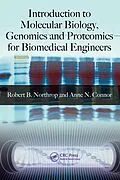Illustrates the Complex Biochemical Relations that Permit Life to ExistIt can be argued that the dawn of the 21st century has emerged as the age focused on molecular biology, which includes all the regulatory mechanisms that make cellular biochemical reaction pathways stable and life possible. For biomedical engineers, this concept is essential to
Autorentext
Northrop, Robert B.; Connor, Anne N.
Inhalt
Introduction. Life and Death. Review of Basic Cell Anatomy and Physiology. Introduction to Physical Biochemistry and Biochemical Systems Modeling. The Basis of Genetic Inheritance. Nucleic Acids and Their Functions. A Review of Proteins. The Genetic Basis for Certain Inheritable Diseases: Genomic Medicine. Some Instrumental Methods Used in Genomics, Proteomics, and Forensic Science. Applications of Genomics. Ethical Issues in Genetic Engineering. Appendix. Bibliography and References. Glossary. Index.
